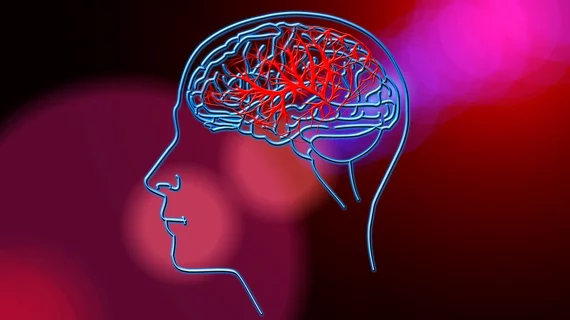CT perfusion a key tool for evaluating stroke patients—but utilization remains low
CT perfusion (CTP) is one of the most effective imaging techniques for identifying when endovascular stroke therapy may be an effective treatment strategy for patients with acute ischemic stroke (AIS).
According to a new analysis published in Circulation: Cardiovascular Quality and Outcomes, however, utilization of CTP remains incredibly low throughout the United States. The primary reason, it seems, is that not nearly enough healthcare providers currently offer it.
The study’s authors focused on Medicare data from 50,000 AIS patients who received care in Texas from 2014 to 2017. All patients were treated at either a Medicare-approved acute hospital or a critical access hospital. A 5% national Medicare dataset was then used to validate the team’s state-level findings.
Overall, the team found that most patients from the Texas cohort were evaluated with non-contrast head CT (64%), MR imaging (33%) and CT angiography (17%). CTP, however, was only used to assess 3% of patients. CTP utilization did increase throughout the study period—approximately 1% per year, in fact—but the number remained much lower than the other imaging modalities.
The National Medicare dataset did validate the team’s findings from the Texas cohort. Among more than 37,000 AIS patients, the authors observed, the initial imaging modality of choice for evaluation was primarily non-contrast head CT (63%), MR imaging (30%) or CT angiography (17%). Again, CTP was utilized to assess 3% of patients.
“In this population-level analysis of imaging utilization in AIS, we found that most patients were evaluated with non-contrast head CT, and while CTP utilization rates increased over the study period, the majority patients with AIS were evaluated at centers that did not perform this study,” wrote first author Youngran Kim, PhD, of the department of neurology at the University of Texas Health Science Center at Houston, and colleagues. “These findings support the need for alternative imaging-based definitions of eligibility for thrombectomy and thrombolysis.”
Read the full study here.

